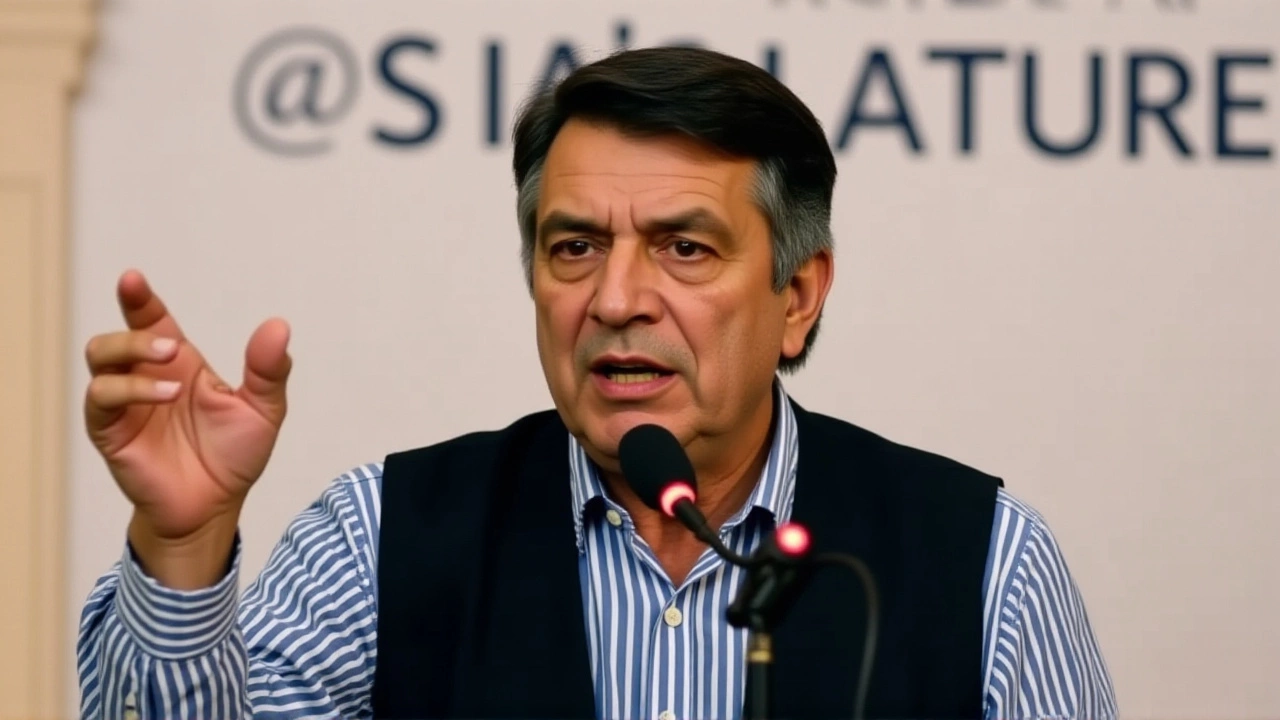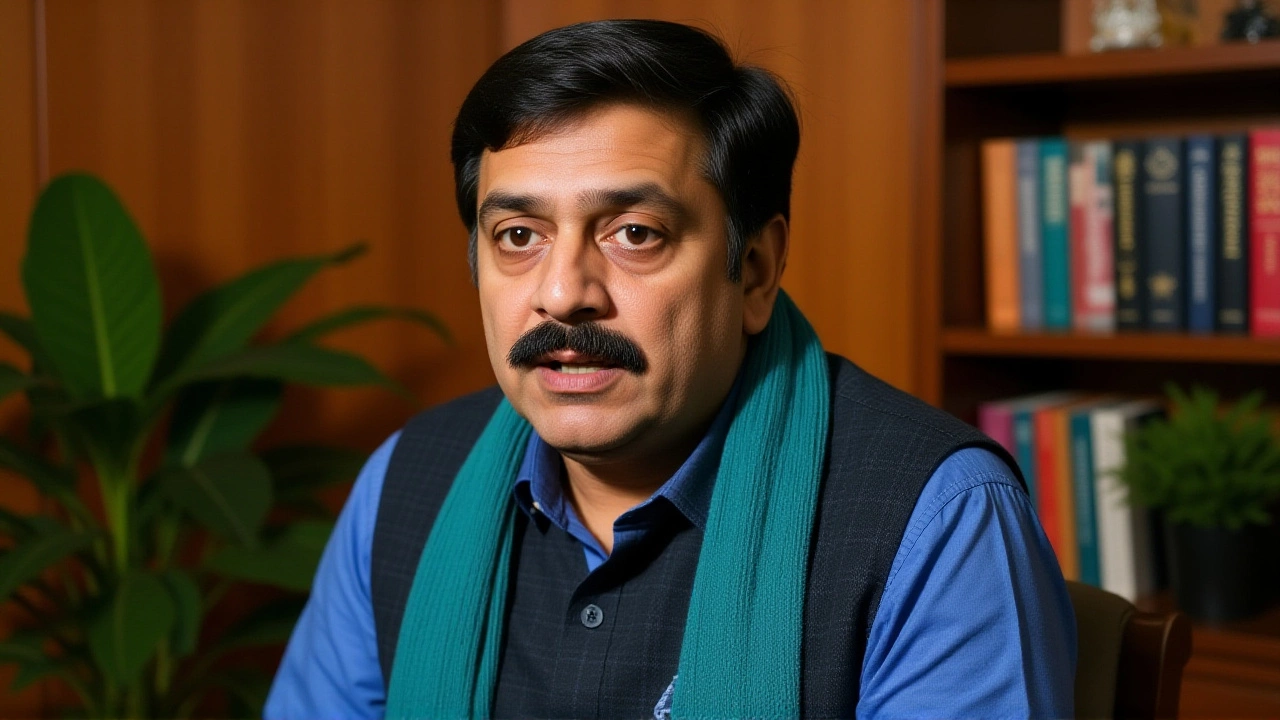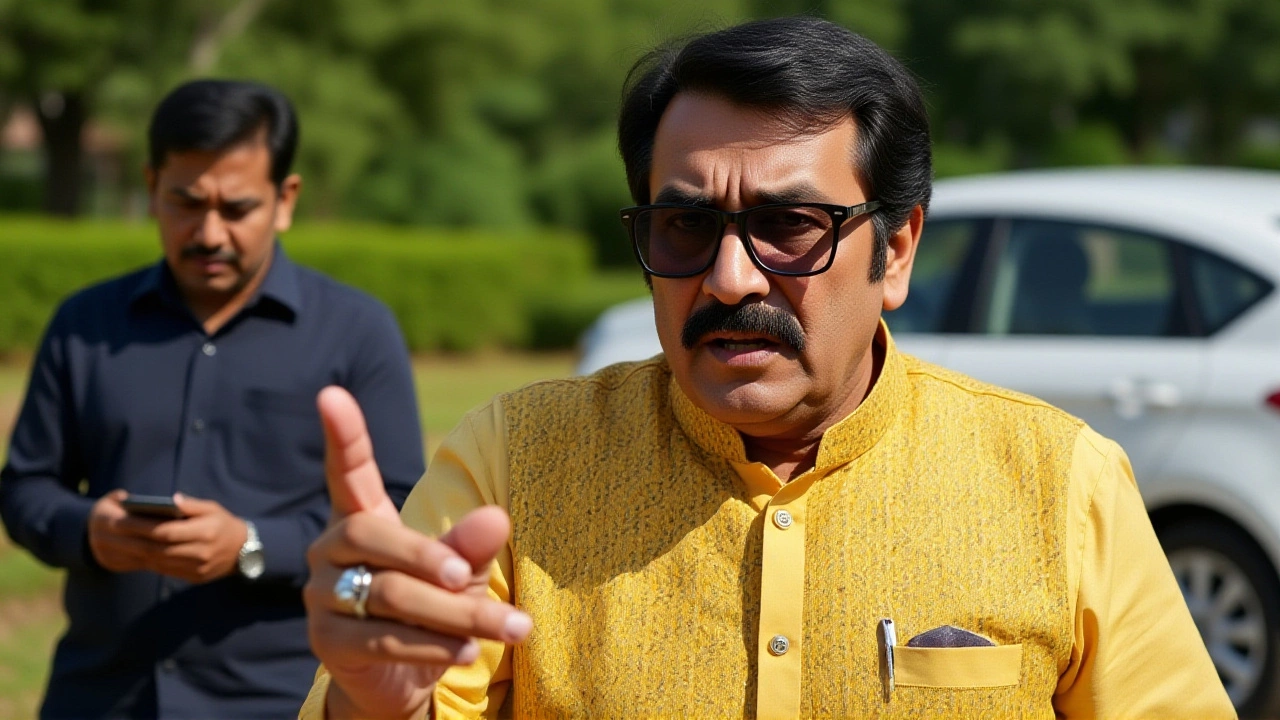When Shashi Tharoor, Congress MP and chair of the Parliamentary Committee on External Affairs stepped onto a podium in Thiruvananthapuram on 8 September 2025, he didn’t mince words about the latest India‑US tariff dispute. He told local reporters that President Donald Trump and his aides were playing “political ping‑pong” with Indian interests, a game that could cost India billions in extra duties and diplomatic goodwill.
Why the tariff row matters now
Trump’s administration announced in late August that the United States would impose a 50 % tariff on a basket of Indian‑made goods – ranging from textiles to electronics – citing “unfair trade practices”. On top of that, U.S. officials have been threatening an additional 25 % levy on any Indian imports of Russian oil, a move designed to pressure New Delhi to cut the fuel pipeline that supplies about 10 % of America’s crude needs.
The timing is odd. Just weeks earlier, at a virtual summit in New York, Secretary of State Anthony Blinken praised the "30‑year partnership" between the two democracies. Tharoor highlighted that disconnect, noting, “It’s one thing to talk about strategic alignment; it’s another to slap half‑century‑high duties on our exporters.”
Tharoor’s blunt take on Trump’s rhetoric
In the same interview, Tharoor called Trump’s approach “capricious” and “border‑line disrespectful”. He quoted a statement from the White House spokesperson that India “cannot continue to ignore the United States and must apologise before returning to the negotiating table”. “A diplomatic apology is not a commodity you can buy with tariffs,” Tharoor said, “and it certainly isn’t something we should be forced to make on someone else’s terms.”
He also referenced a separate comment by U.S. Commerce Secretary Howard Lutnick, who warned that “India will have to reap the consequences if it keeps turning a blind eye to American concerns.” Tharoor responded, “We have no problem addressing legitimate concerns, but a 50 % duty is punitive, not protective.”
Russian oil, American leverage, and India’s autonomy
Trump’s claim that India would “nearly stop importing Russian oil by year‑end” caused a fresh stir. Tharoor, switching briefly to English, warned, “I don’t think it’s appropriate for Mr Trump to announce what India will decide on its own energy policy.” He reminded listeners that India’s oil imports from Russia have been falling steadily since 2022, but a complete halt would require “significant logistical reshuffling” that no single foreign leader can dictate.
According to the Ministry of Petroleum and Natural Gas, Russian crude accounted for about 12 % of India’s oil basket in Q2 2025. A sudden 25 % extra tariff on any remaining shipments would effectively raise the price of Russian oil in India by roughly $1.5 billion annually, a figure Tharoor said “would hurt Indian consumers more than it would pressure Moscow.”

Reactions from New Delhi’s top brass
Prime Minister Narendra Modi has so far kept a diplomatic tone, emphasizing “mutual respect” during a press briefing on 23 September 2025. He urged “balanced engagement” and signaled that India would review the U.S. tariff measures “in line with national interest.”
External Affairs Minister S. Jaishankar echoed the same sentiment, adding that “India’s sovereign right to determine its energy mix remains inviolable.” The two leaders, however, have not yet detailed any concrete counter‑measures.
What the numbers say
- U.S. announced a 50 % tariff on Indian goods in August 2025.
- An additional 25 % tariff is being considered on any Indian imports of Russian oil.
- India imports roughly 10 % of its petroleum from Russia, worth about $3.2 billion a year.
- The projected fiscal hit from the combined duties could exceed $2 billion for Indian exporters.
- Trade between India and the United States stood at $146 billion in FY 2024‑25.
Possible next steps for both sides
Analysts anticipate that New Delhi might bring the dispute before the World Trade Organization, a route that could stall the tariffs while a formal panel reviews the case. Meanwhile, the White House is reportedly preparing a “strategic review” that could temper the 50 % duty if India offers concessions on the Russian oil front.
Tharoor urged the Modi government to “maintain a calibrated response”, warning that an all‑out tit‑for‑tat could jeopardize the broader “strategic partnership” that underpins defense cooperation, technology sharing, and climate initiatives.

Why this matters to everyday Indians
Beyond the diplomatic theater, the tariffs could hit small‑ and medium‑sized exporters in Kerala, Gujarat, and Tamil Nadu the hardest. A 50 % duty on garments, for example, would double the cost for U.S. buyers, potentially shutting down orders that sustain over 200,000 jobs across the country. The oil tariff, on the other hand, could push gasoline prices up by 5–7 paise per litre, an increase that would be felt in every household’s budget.
Looking ahead
The next few weeks are crucial. If the United States backs down, it could signal a shift in Trump’s trade strategy ahead of the 2026 mid‑term elections. If India pushes back hard, the tariff war could expand, drawing in other sectors like pharmaceuticals and IT services.
For now, Tharoor’s message is clear: “India will not be bullied into a corner. We will engage, but on our own terms.” The world will be watching to see whether dialogue or deterrence wins the day.
Frequently Asked Questions
What specific Indian products are affected by the 50 % U.S. tariff?
The tariff targets a wide range of goods, including textiles, footwear, automotive parts, and certain electronic components. Exporters in Kerala’s garment sector and Gujarat’s auto‑parts industry are expected to bear the brunt, with price hikes that could make U.S. buyers look elsewhere.
How does the proposed 25 % tariff on Russian oil imports affect India?
If enforced, the extra duty would raise the effective cost of Russian crude by roughly $1.5 billion annually. That increase would likely be passed on to consumers, nudging gasoline prices up by a few paise per litre and squeezing the margins of Indian refineries that rely on cheaper Russian feedstock.
What diplomatic channels are being used to resolve the dispute?
New Delhi has signaled its intent to raise the issue at the World Trade Organization, while also seeking a bilateral dialogue through the U.S. State Department. Behind the scenes, senior officials from both sides are reportedly exchanging notes to avoid a full‑blown trade war.
How might the tariff conflict impact India‑U.S. security cooperation?
While security ties—including joint naval exercises and defense purchases—are likely to continue, a prolonged economic standoff could create friction in future negotiations. Analysts warn that mutual trust on strategic matters may erode if trade disputes spill over into defense talks.
What are the next steps for Indian policymakers?
The government is expected to finalize its response within the next two weeks, possibly filing a complaint at the WTO and preparing a domestic relief package for affected exporters. Simultaneously, it will continue diplomatic outreach to the U.S. to de‑escalate tensions before the upcoming mid‑term elections in America.
